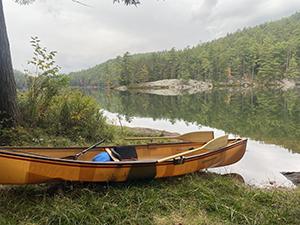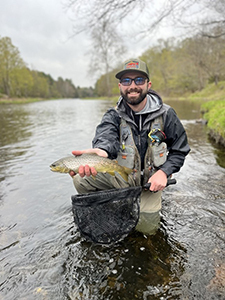The Fishing Line - September 15th Issue
The New York State Department of Environmental Conservation sent this bulletin on 09/15/2023 04:15 PM EDT |
| DEC Delivers - Information to keep you connected and informed from the NYS Department of Environmental Conservation |
| View in browser |
The Fishing Line - September 15th Issue |
Freshwater Fishing, Fisheries Management, and Fishing Access NewsIn This Issue:
Pilot Creel Survey on Saranac and Boquet Rivers
A creel survey that focuses on the Atlantic salmon spawning runs in the Saranac and Boquet Rivers is currently underway and will extend through December 31st. During this survey anglers will have the opportunity to voluntarily share information about their day of fishing. This includes catch information such as fish caught, length, presence of fin clips, and presence/absence of sea lamprey wounds, as well as overall satisfaction of the fishery. Obtaining this data will be helpful to inform future management actions on these waters. Saranac River Survey Locations
Boquet River Survey Locations
Fall Fishing Tips
The weather may cool off in the fall, but that doesn't necessarily mean the fishing does too. Gamefish often become more active as they feed in preparation for winter. Forage is plentiful for gamefish in the fall as young-of-the-year yellow perch, sunfish, gizzard shad and alewives reach desirable sizes. Gamefish will often follow these species around, so it can sometimes be challenging to locate fish. Below are some tips that will hopefully help you land a few more fish this time of year:
DEC Fisheries Staff Spotlight - Ed Rolle, Region 3 Inland Fisheries Unit
I’m a Fish and Wildlife Technician 1 working with the DEC Region 3 Inland Fisheries Unit based out of New Paltz. I grew up in a small town called Fort Plain in upstate NY. Knowing I wanted to work in the conservation field, I went to SUNY College of Environmental Science and Forestry (ESF) in Syracuse where I received my bachelor’s degree in Aquatics and Fisheries Science in May of 2020. Graduating during the pandemic, I ended up moving to live and work in Prince William Sound, Alaska at a remote sockeye salmon hatchery. After almost a year, pretty much removed from the rest of the world, I ended up moving back to NY in the spring of 2021 where I accepted a position with DEC in the Lake Ontario Fisheries Unit as a creel technician. Based out of Oswego, I helped assess trout and salmon populations of eastern Lake Ontario and its tributaries. To get closer to the trout fishing I’m fond of, I then moved to the DEC Region 3 New Paltz office in February of 2022 and have been here since. As a DEC Fish and Wildlife Technician, I have a wide variety of responsibilities. I help conduct our fisheries surveys using a variety of gear types including trap nets, gill nets, boat and backpack electrofishing. Many of our surveys are on the multitude of trout streams in the area or monitoring populations of invasive species. One of the most challenging, yet rewarding aspects of my job, is our I FISH NY educational outreach programs when I take children and new anglers fishing, teach a bit of aquatic ecology, as well as other skills like fly casting. When I’m not at work, you can hopefully find me in the Catskills in a trout stream. I’ve been mapping populations of native brook trout with my fly rod and have caught wild trout out of 28 different streams so far this year. Hope to see you on the water! |



